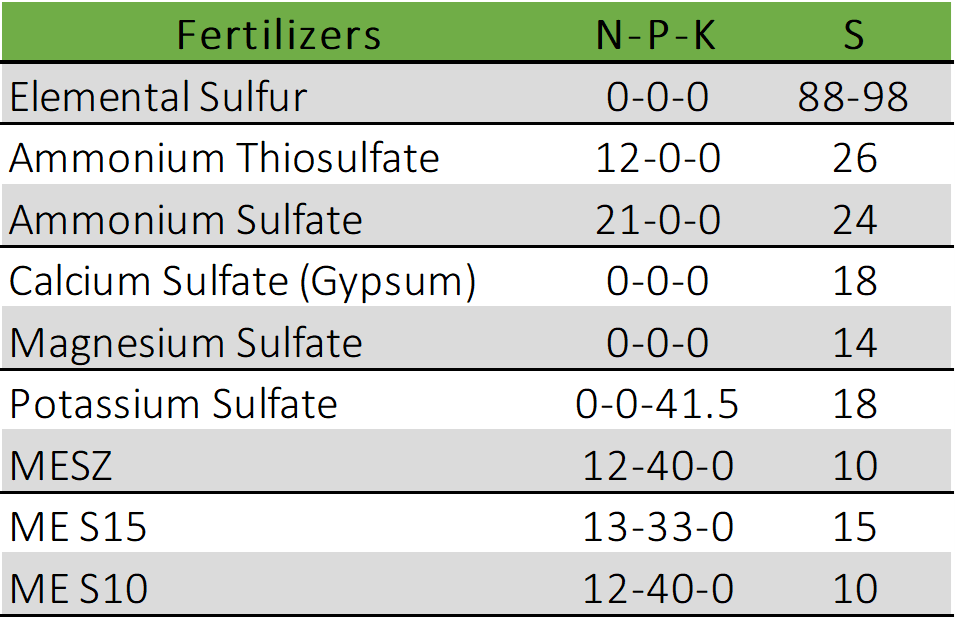Sulfur is one of the essential nutrients that is required by all plants to live and successfully complete their life cycle. Just like any other nutrient, if sulfur is limited, growth and development will be harmed, having an impact on the final product (reduced yield/profitability). Some would say that sulfur needs to have primary consideration right behind N, P, K. Even though sulfur isn’t a macro nutrient, it is very high on the micronutrients list.

Since sulfur is immobile in the plant, deficiency will be present in the newest leaf material. This nutrient can be mobile in the soil and needs to be managed to allow root systems to have an ample supply. It’s important to understand nutrient application needs and apply accordingly:
- Elemental sulfur takes longer to be plant available.
- Sulfate sulfur is already in a form that is available to the plant.
Organic matter will release sulfur for a plant to utilize. However, timing and supply can vary from year to year and even differ based on location in a field. Many high-yield growers are evaluating the application of sulfur to both their corn and soybean crops. I have worked with several producers who are experiencing success by applying AMS (Ammonium Sulfate) pre-plant for soybeans. It’s always good to try new concepts on a small scale to validate the theory, then evaluate proper rates that will provide a consistent return on investment.
Sulfur Importance:
- Associated with amino acids/proteins
- Physiological growth
- Reduces environmental and other stresses
- Yield and profitability!
Sulfur Deficiency Situations:
- Low organic soil: less sulfur released
- Heavy leaching soils: sulfur removed from root zone
- Low microbial activity soils: slow/low volume of release
- Cool wet soils/early planting: Slow release and may or may not be positionally available
Editor’s note: The blog originally incorrectly said sulfur is mobile in the plant.
 Since sulfur is immobile in the plant, deficiency will be present in the newest leaf material. This nutrient can be mobile in the soil and needs to be managed to allow root systems to have an ample supply. It’s important to understand nutrient application needs and apply accordingly:
Since sulfur is immobile in the plant, deficiency will be present in the newest leaf material. This nutrient can be mobile in the soil and needs to be managed to allow root systems to have an ample supply. It’s important to understand nutrient application needs and apply accordingly:

 and then
and then